Goal: When you have finished this laboratory exercise you will understand
- how grain drying is influenced by the psychrometric properties of drying air
and you will learn
- how moisture content of cereal grains changes with different drying air temperature
- the effect of drying air temperature and relative humidity on the drying time
-
There are numerous types of drying systems used in the food industry. In reference to this experiment, we will view some typical driers used in the cereal grains, e.g. rice and wheat. Two common configurations are batch and continuous driers.
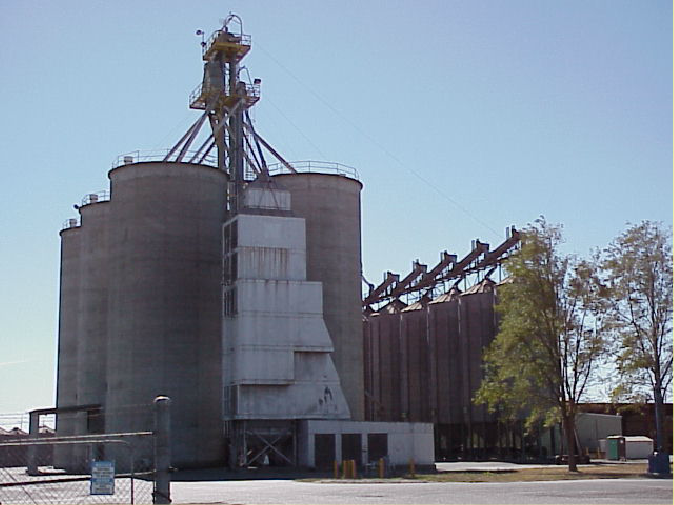
-
Batch Driers:
Batch driers have a plenum at the bottom, the grain is placed on a screen mesh floor, the height of the grain in a batch drier may be several meters high. either ambient or mildly heated air is lown through the grain. The drying front moves slowly upward, and it may take several days for the grain to dry.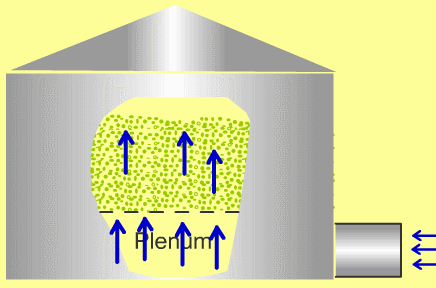
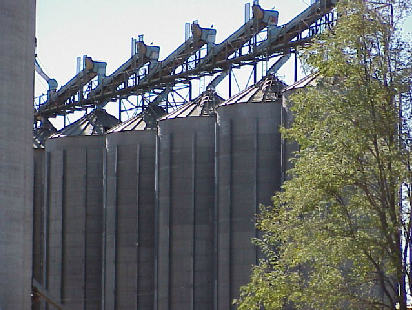
-
Continuous Driers:
In continuous driers, grain moves in a column from top to bottom. Depending on the direction of air flow, these driers may be cross flow, concurrent flow, or counter current flow.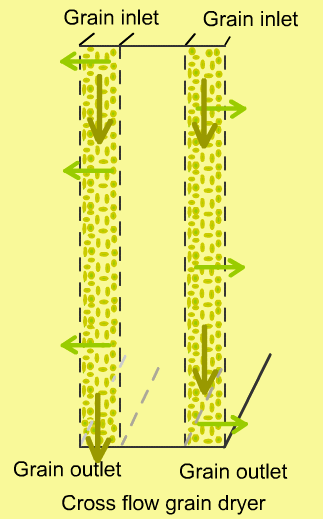
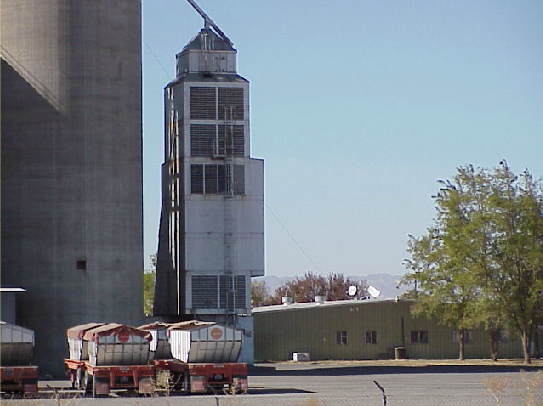
-
In case of certain grains such as rice that is sensitiv to drying, the drying process is accomplished in several passes. Between each drying pass, the grain is tempered in silos for up to 24 hours.
In a column drier, the moisture decrease is restricted to 1 or 2% moisture content. Thus, to lower the moisture content from 24 to 14% (wet basis) up to five passes may be used, with 24 hour tempering time between each pass.
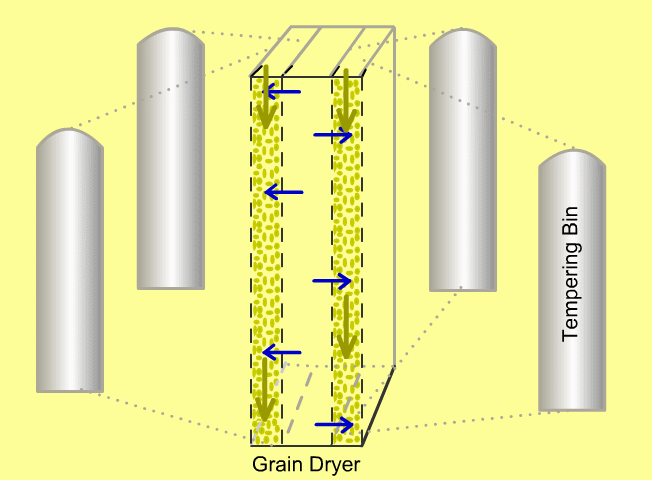
-
A counter-current flow tunnel drier is used in drying prunes and grapes.
Counter Current Drier 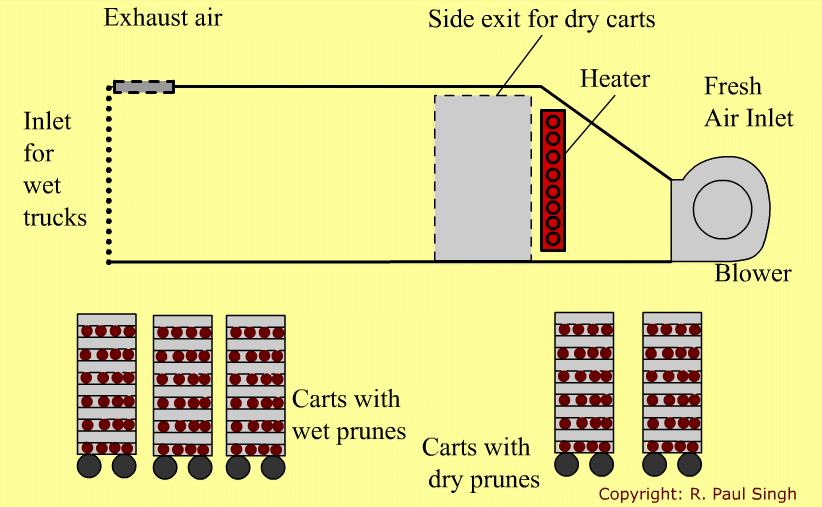
-
A concurrent flow drier is sometimes used in drying prunes and grapes.
Concurrent Flow Drier 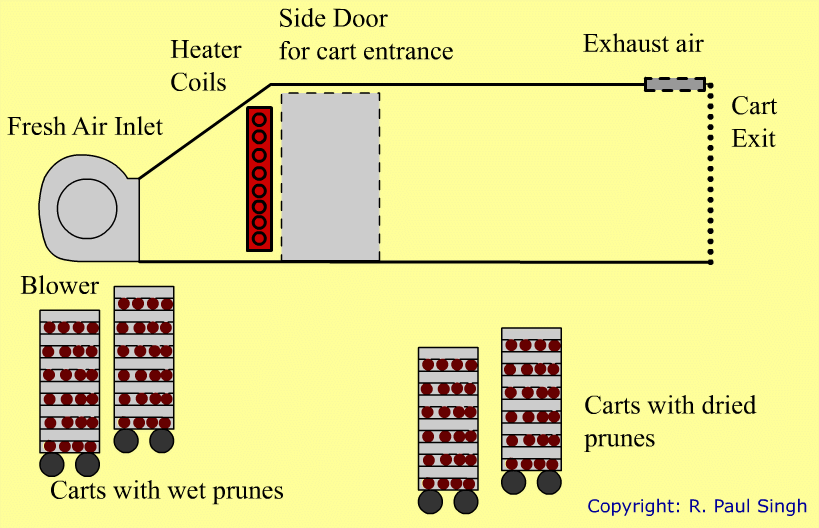
-
A fluidized bed drier is commonly used for drying small particulates including food powders.
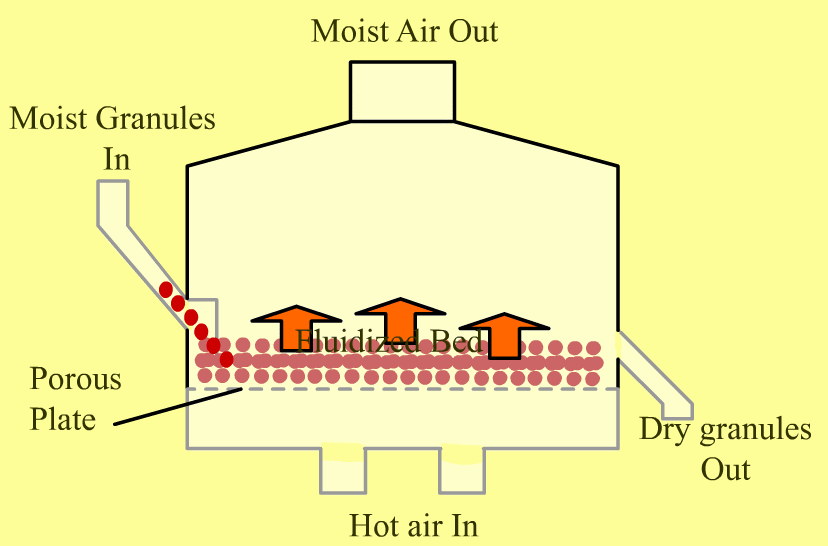
-
A spray drier is used in drying milk, coffee and fruit juices.
Mixed Air Flow Spray Drier 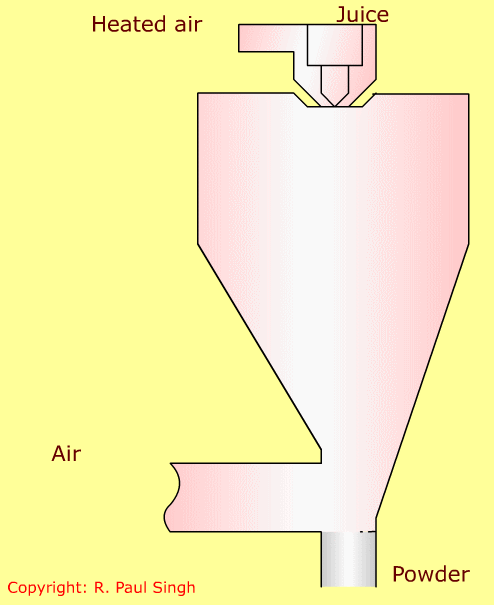
-
A freeze drier is used to dry a wide variety of foods.
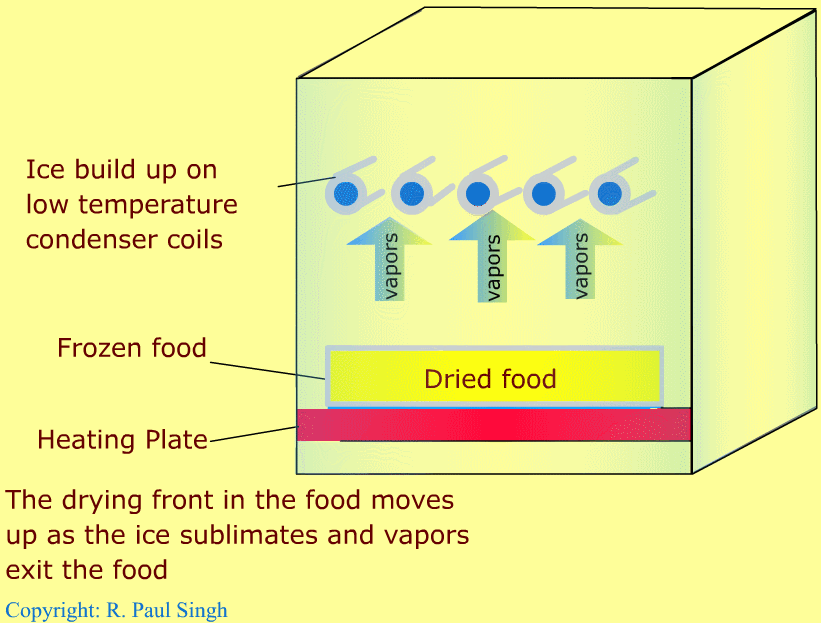
-
For a laboratory experiment, we use two cereal grains: yellow-dent corn and sunflower seed. the procedure is as follows:
1. Determine the initial moisture content of cereal samples using a vacuum oven (use ASAE standard to determine moisture content).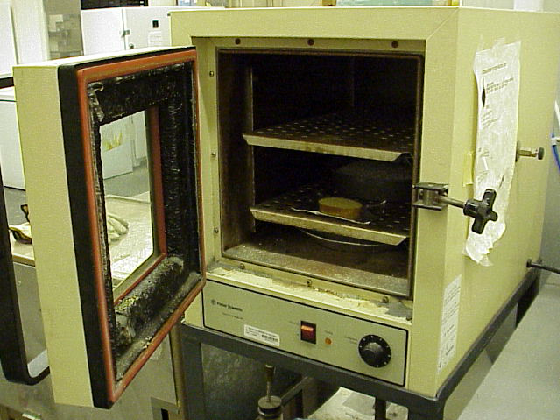
-
2. Spread the grain sample on a wire mesh screen and start the blower.
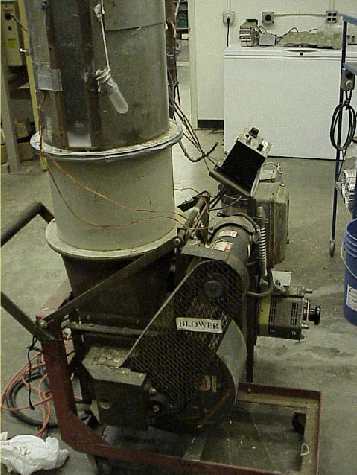
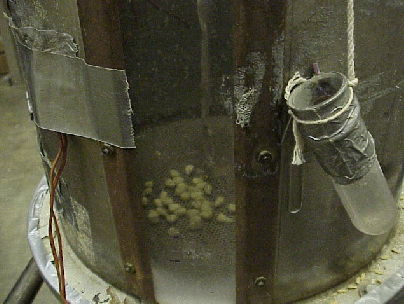
-
3) Record the air temperature and humidity. Take small samples of grain from the mesh screen at some periodic intervals and determine the moisture content.
-
In the virtual experiment, you will select either corn or sunflower seed, air relative humidity, air temperature, initial moisture content, and drying time. The results include change in moisture content with time.
-
Drying of foods involves simultaneous heat and mass transfer. Air is the most common medium used for drying, it not only helps in transferring heat into the product, but also removes moisture from the product surface. A moisture concentration gradient is set up inside the product. The interior regions of a food have higher moisture content than the outer regions close to the surface. The moisture movement inside the food is largely due to diffusion.
In single layer drying, the grain is spread as a single layer of kernels on a mesh screen. As a results, each kernel of grain is completely exposed to air. The drying rate is determined by the properties of the grain, psychrometric properties of air (temperature, humidity ratio), and the air velocity.
-
In this laboratory excercise, you obtained data on the change in moisture content with drying time for various drying air temperatures and humidity. Using these data create plots of moisture content vs time. Using moisture content vs time plots, determine the effect of different temperatures and air humidity on drying.
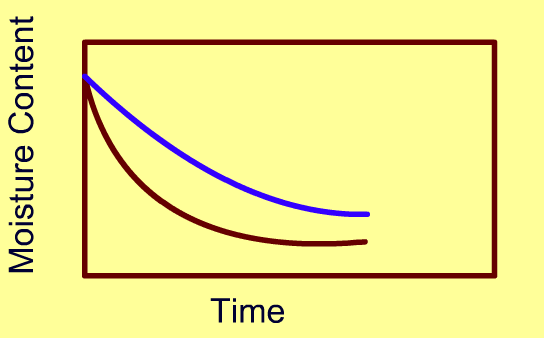
- Discuss the effect of drying air relative humidity on the change of moisture content of grains during drying for the same drying air temperature.
- Discuss the differences of moisture content vs. time plots of yellow-dent corn and sunflower seed.
- List and discuss the reasons for the different plots of drying yellow-dent corn and sunflower seed for the same processing conditions.
- Show how you may use the Page's equation with coefficients obtained in this experiment.
- Fellos, P.J. (1997). "Food Processing Technology, Principles and Practices," Woodhead Publishing Series, Cambridge.
- Potter, N.N. and Hotchkiss, J.H. (1986). "Food Science," 5th ed., Chapman and Hall, New York.
- Singh, R.P., and Heldman, D.R.(2009). "Introduction to Food Engineering," 4th ed., Academic Press, London.